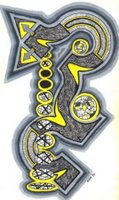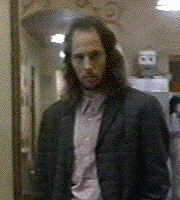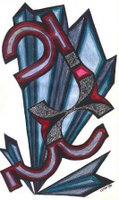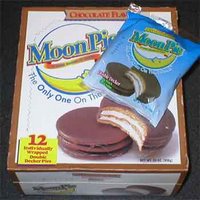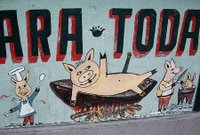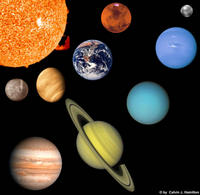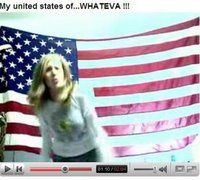non-disclosure agreements
 Everyone makes you sign a non-disclosure agreement these days. NDAs are all the rage.
Everyone makes you sign a non-disclosure agreement these days. NDAs are all the rage.It’s not as if they tell you anything once they make you sign an NDA. No secrets are imparted. No arcane knowledge is transmitted. No shape-shifting is discussed. They just don’t trust you enough to tell you anything, in spite of all of this legal ass-covering.
 I went to have lunch with a friend who works at an unnamed Silicon Valley company – not the one where the cafeteria is free, but another one, one you've probably never heard of – and I had to sign an NDA. The receptionist gave me a look full of significance and disgust when I tried to opt out. Once. Twice. Three times. I buttoned "Decline" each time I was offered the NDA to sign and would have to start over.
I went to have lunch with a friend who works at an unnamed Silicon Valley company – not the one where the cafeteria is free, but another one, one you've probably never heard of – and I had to sign an NDA. The receptionist gave me a look full of significance and disgust when I tried to opt out. Once. Twice. Three times. I buttoned "Decline" each time I was offered the NDA to sign and would have to start over.It turned out that the system that creates visitor's badges wouldn’t produce a printed badge unless you signed the NDA.
The man behind me, a vendor, waiting not-very-patiently, echoed the receptionist’s icy glare.
“Just sign it! For godssakes!” I could see it in both their expressions. “Sign it already! What's the matter with you?”
The vendor showed solidarity with the receptionist by flirting his way through his own sign-in process. He signed away his right to disclose as if it were pillow talk, part of an elaborate mating ritual. They smiled a secret smile of collusion at each other. Was that a wink?
 So I signed an NDA to eat lunch at Company X's cafeteria. Now I won’t be able to tell you what Company X has in its salad bar. Whether or not there are pickled beets. If the tofu cubes are fresh. How many kinds of crunchies there are to sprinkle on top of your greens (hint: 3). If there’s grilled asparagus on offer (“Asparagus? There goes the golden showers weekend!” as they say at the Eagle Tavern). Or even whether Company X's cafeteria had incorporated Yoram's revolutionary idea: A gravy bar ("An employee smothered in gravy is a happy employee").
So I signed an NDA to eat lunch at Company X's cafeteria. Now I won’t be able to tell you what Company X has in its salad bar. Whether or not there are pickled beets. If the tofu cubes are fresh. How many kinds of crunchies there are to sprinkle on top of your greens (hint: 3). If there’s grilled asparagus on offer (“Asparagus? There goes the golden showers weekend!” as they say at the Eagle Tavern). Or even whether Company X's cafeteria had incorporated Yoram's revolutionary idea: A gravy bar ("An employee smothered in gravy is a happy employee").Nope. I’m going to have to keep it all a secret, as promised in writing.
NDAs don’t just keep trade secrets and business strategy safe; they also hide embarrassing facts from the light of day. Google’s agreements with the university libraries, the ones whose books they’re madly scanning?
Secret.
Salaries? Severance agreements? Out-of-court settlements?
Secret. Secret. Secret.
It’s a wonder that other establishments besides Silicon Valley corporations have not adopted this kind of legal document. It seems so useful. Perhaps one day the whole of US foreign policy will be covered under an NDA.
I thought about NDAs again and again during our annual Xmas holiday excursion to LA.
In a way, the whole experience should be covered by an NDA. Who wants to hear about other peoples’ holiday trips?
No-one, really. No-one. You wouldn’t be reading this if I’d been coerced into signing an NDA. You pay a therapist to listen to shit like that. In fact, there's an entire genre of cartoons -- I'm thinking the Lockhorns, Howard Huge, or Family Circus -- all based on the idea that no-one can stand seeing anyone else's vacation slides.
But I haven't signed this time. You're gonna hear all about it. Like a Girls Gone Wild commercial, I'll even turn up the volume.
 First you have to know that I’ve spent every Xmas vacation of my life in LA. So I have nothing to compare it to. I love LA at Xmas time. It’s seductively warm and sunny and blue-skied. It’s the LA of my youth, where everyone’s friendly and dachshunds trot double-time along the Strand wearing Santa hats on their little pointy-snouted heads, mindful to avoid the dangerous roller-skaters and the surfers crossing the last sidewalk between them and the waves. Arf! Arf-Arf!
First you have to know that I’ve spent every Xmas vacation of my life in LA. So I have nothing to compare it to. I love LA at Xmas time. It’s seductively warm and sunny and blue-skied. It’s the LA of my youth, where everyone’s friendly and dachshunds trot double-time along the Strand wearing Santa hats on their little pointy-snouted heads, mindful to avoid the dangerous roller-skaters and the surfers crossing the last sidewalk between them and the waves. Arf! Arf-Arf!It’s an Angelyne billboard, LA is. A Randy Newman song. A Three's Company episode.
 If I had signed an NDA, I wouldn’t be able to tell you how swell it is. Nor would I tell you that all of my attempts to move to significantly colder climes – Connecticut, Massachusetts, and beyond – were foiled by spending the Xmas holidays in LA. I’d go for a visit at Xmas, spend a few warm afternoons walking on the beach, pretending I didn’t want a tan when I really did. ("Oh, that? It was an accident. I forgot the sunscreen. Who'd have thought it'd be so sunny?") And I’d be sucked back in again. I’d invariably move back in February, Joan Didion, Big Doughnut, and X on my mind.
If I had signed an NDA, I wouldn’t be able to tell you how swell it is. Nor would I tell you that all of my attempts to move to significantly colder climes – Connecticut, Massachusetts, and beyond – were foiled by spending the Xmas holidays in LA. I’d go for a visit at Xmas, spend a few warm afternoons walking on the beach, pretending I didn’t want a tan when I really did. ("Oh, that? It was an accident. I forgot the sunscreen. Who'd have thought it'd be so sunny?") And I’d be sucked back in again. I’d invariably move back in February, Joan Didion, Big Doughnut, and X on my mind.Each time, I’d use the same excuse: I don’t want to change dentists. You choose your dentist for life and my dentist was in Gardena, just off Alondra Boulevard.
But if we were all under NDAs, it'd be a lot simpler.
“How was your trip to LA?” friends would ask.
“Can’t tell you. I’m under an NDA.” you’d answer.
 And that would be that. No-one else would’ve moved to LA and LA wouldn’t have gotten so damn big and the 405 wouldn’t be moving at a crawl day and night.
And that would be that. No-one else would’ve moved to LA and LA wouldn’t have gotten so damn big and the 405 wouldn’t be moving at a crawl day and night.Metering wouldn't ever need to be on.
Now – thanks to the efficacy of our communications system and the fact that The OC, Monk, and Gilmore Girls all filmed there – you have to scramble to get one of their old-fashioned motel rooms with their lumpy mattresses, sticky indoor-outdoor carpeting, unlightable wall furnaces, and that mildewed smell that beach houses always have. You send ‘em a check months ahead of time to hold the room (the deposit is one-half the room’s total cost) and they cash it right away. They’re serious. You’re unlikely to get that earnest money back if you chicken out at the last minute. Doesn't matter what the reason is. If you weren’t serious, you shouldn’t have been making a reservation.
The Sea Sprite should have its own NDA, given the current state of affairs. The Sprite is so busted by websites like tripadvisor ("What a dump!") and hotelchatter ("Will the real Slim Shady please stand up?"), because not only is the Sea Sprite no longer a secret; the people who stay there expect it to be something other than what it is.
You can tell: the Sea Sprite ranks #7 of 7 hotels in Hermosa Beach in TripAdvisor's popularity index. It’s not well-loved. Fruiter from Seattle tells his story:
So the first night we were there, I closed the sliding glass door and pulled down the latch, thinking it was locked. At 2 am I wake up to my wife yelling at me that someone is in bed with me. I look down and there is an asian [sic] girl, about 25 laying next to me dry heaving, or at least I thought she was dry heaving. She was wasted. I lifted her up and steered her out the door, which was now open. She finished up and banged on the door. I had pulled the curtain and locked the door. She saw me, realized she had gone to the wrong room and left. None of this is the hotel's fault, obviously. The problem was that she had gotten some puke on the bedding, the nightstand, and the carpet. When they cleaned they didn't change the wole [sic] bed, just the sheets, the [sic] didn't clean the nightstand or the carpet. We complained. The guy at the front desk blamed us for leaving the door unlocked and told us we would be charged for the extra cleaning!!!So ol' Fruiter didn’t lock his sliding glass door. Some people would pay extra for a young Asian woman to slip in their room under cover of the night, crawl into their bed, and vomit on them. He didn’t have to. In fact, I'm certain there are whole acronyms devoted to this fetish on Craigslist. Get with the program, Fruiter!
Then there’s KatieScarlettO from Salt Lake City:
This last visit we had two drunk men on the other side of the wall beating each other all night, even throwing the TV down the hall stairs. There is no nighttime desk coverage (which is a whole other building anyway) and we were afraid if we called the police that these guys would know who had called. So we sat up terrified all night and there was nothing we could do about it.
 KatieScarlettO is unfamiliar with the old Hermosa Beach, a place where surfers lived in garages without plumbing and TV-throwing was a popular mode of self expression. The Mermaid – a dive bar where the barflies’d sit in the dark just footsteps away from the blinding beach sunshine, not caring whether it was 5am or 5pm – occupied prime real estate at the end of Pier Avenue. Either/Or Books – the LA equivalent of Kepler’s – was right up the street.
KatieScarlettO is unfamiliar with the old Hermosa Beach, a place where surfers lived in garages without plumbing and TV-throwing was a popular mode of self expression. The Mermaid – a dive bar where the barflies’d sit in the dark just footsteps away from the blinding beach sunshine, not caring whether it was 5am or 5pm – occupied prime real estate at the end of Pier Avenue. Either/Or Books – the LA equivalent of Kepler’s – was right up the street.The TV throwers – they’re extra too. KatieScarlettO, you’ll see a charge reflected in your bill when you check out.
 The Sea Sprite would’ve benefited from an NDA. If they’d had visitors sign one upon registration, none of these stories would’ve been told.
The Sea Sprite would’ve benefited from an NDA. If they’d had visitors sign one upon registration, none of these stories would’ve been told.What happens on the beach, stays on the beach.
 Then too, no-one would know that each Xmas day, the staff exchanges gifts in the tiny courtyard. They set up a miniature Xmas tree on top of a picnic table and stack all the gifts under it. Each person has drawn a “Secret Santa” name out of a hat a few weeks earlier, so everyone gets something; some of the younger staff members even squeal with delight at their presents. Everybody seems to know each other pretty well: the head maid has been there 17 years; some of the other maids have been there almost that long. We always watch the gift exchange from the anonymity provided by being inside a sliding glass door.
Then too, no-one would know that each Xmas day, the staff exchanges gifts in the tiny courtyard. They set up a miniature Xmas tree on top of a picnic table and stack all the gifts under it. Each person has drawn a “Secret Santa” name out of a hat a few weeks earlier, so everyone gets something; some of the younger staff members even squeal with delight at their presents. Everybody seems to know each other pretty well: the head maid has been there 17 years; some of the other maids have been there almost that long. We always watch the gift exchange from the anonymity provided by being inside a sliding glass door.Certainly the NDA would cover that added bit of sweetness too.
 When I was growing up, I remember the Strand in Hermosa as being lined with funky little beachfront cottages, bits of shells and broken blue and green glass pressed into their front walls. A couple of beater bicycles chained up in the yard. Surfboards with a light crust of Mr. Zog’s Sex Wax and sand leaning on the rails of upstairs balconies. Sand everywhere. It was by no means opulent. When I was 9, I couldn’t imagine anywhere better to live.
When I was growing up, I remember the Strand in Hermosa as being lined with funky little beachfront cottages, bits of shells and broken blue and green glass pressed into their front walls. A couple of beater bicycles chained up in the yard. Surfboards with a light crust of Mr. Zog’s Sex Wax and sand leaning on the rails of upstairs balconies. Sand everywhere. It was by no means opulent. When I was 9, I couldn’t imagine anywhere better to live. Like everyone else who lives along Hermosa Beach, any stray moments during the Xmas holiday we spent strolling up and down the Strand – promenading from 10th Street to 1rst Court; from 1rst Court to 35th Street; and back to 10th Street (and the Sea Sprite) again. I strained to see remnants of the old cottages. It’s hard to find even the remotest trace of those old beach shacks.
Like everyone else who lives along Hermosa Beach, any stray moments during the Xmas holiday we spent strolling up and down the Strand – promenading from 10th Street to 1rst Court; from 1rst Court to 35th Street; and back to 10th Street (and the Sea Sprite) again. I strained to see remnants of the old cottages. It’s hard to find even the remotest trace of those old beach shacks.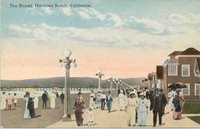 But our memories play tricks on us. Were there ever beach shacks in Hermosa? I found a memoir recalling the early 1940s: the houses built on the prime Strand real estate were substantial and the lots were expensive, even then. The lot at 2500 Strand, where 25th Street meets The Strand, was $500 in 1910 and the house pictured was $3,000. Not cheap. Not funky. A good, solid, place on the beach for a good, solid family to enjoy a breezy escape from the rigors of a Pasadena summer. Not bohemians. Not a shack.
But our memories play tricks on us. Were there ever beach shacks in Hermosa? I found a memoir recalling the early 1940s: the houses built on the prime Strand real estate were substantial and the lots were expensive, even then. The lot at 2500 Strand, where 25th Street meets The Strand, was $500 in 1910 and the house pictured was $3,000. Not cheap. Not funky. A good, solid, place on the beach for a good, solid family to enjoy a breezy escape from the rigors of a Pasadena summer. Not bohemians. Not a shack.I’d like the facts to sign an NDA with my memory: no need for the facts to screw up a perfectly good bout of nostalgia. The fin de siecle Cathy couldn’t afford a place in Hermosa Beach either.
 The most natural thing to do as you walk along The Strand in the darkness of a perfect winter night – careful to avoid hints of dog shit left over from the day’s walking of the pooches – is to look in the windows. Walkers are the only ones who can really look in, unless a stray seagull or sandpiper wants to peek, so the residents seldom obstruct their views with curtains. Normal rules of etiquette and good taste are suspended on The Strand.
The most natural thing to do as you walk along The Strand in the darkness of a perfect winter night – careful to avoid hints of dog shit left over from the day’s walking of the pooches – is to look in the windows. Walkers are the only ones who can really look in, unless a stray seagull or sandpiper wants to peek, so the residents seldom obstruct their views with curtains. Normal rules of etiquette and good taste are suspended on The Strand.The funny thing is, you hardly ever see people when you look in. You’d think they’d be staring off at the distant lights of Palos Verdes and Malibu, perhaps like Jay Gatsby looking at the light at the end of the dock across the bay. I don’t see the blue light of a TV screen, so maybe they’re in one of the back rooms – the media room, according to real estate ads – watching something they’d TiVo’d earlier in the day.
But what I wonder is, are the people who live in these glass houses still glad they have a piece of coast once they’ve lived in full view for awhile? Once they’ve gone through a cycle of seasons. A noisy summer. June fog. The hottest day of the year. A major drinking holiday. A rainy season.
You know that the realtor who sold them the place used every cliché about location. Even Frank Bascombe, realtor extraordinaire, said stuff like, “Real estate’s always good by the ocean. Inventory’s my problem. If I had a house like this [to sell] every day, I’d be richer than I am.” You can’t disagree with him: they try to manufacture more coastline, but it just doesn’t work very well.
“I wish I’d bought that Italianate villa in Malibu. 180 degrees of ocean view in an exclusive gated community. All the privacy you could hope for.”That’s what today’s Strand dwellers say in my mind. They’re chock-a-block with buyer’s remorse. They see the dog urine (and perhaps human urine) on the wall separating sand from cement. They can hear the shrieks of revelers all summer long. The endless promenade of beach-goers pass their front porches. The sun bleaches everything that’s anywhere near the west-facing windows.
“I wish I’d bought that mid-century California Rancher in Lunada Bay.” I can hear the homeowner mutter from his media room.
Is it schadenfreude?
The NDA would cover schadenfreude. Oh yeah, I could experience schadenfreude; I just couldn’t gloat publicly. My public attitude would be one of amazement at your great good luck.
“Oh, you live on The Strand. Oh lucky you.”
And now I’ve returned to San Francisco/Silicon Valley/Northern California, land of the NDA.
Did I have a nice Xmas?
I’m not telling.

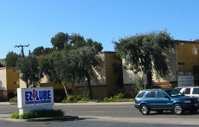 Am I moving back to LA?
Am I moving back to LA?Dr. Kawahara retired years ago; my dentist is in Palo Alto.
So have a happy New Year, one and all. Just don’t tell anyone, okay?
